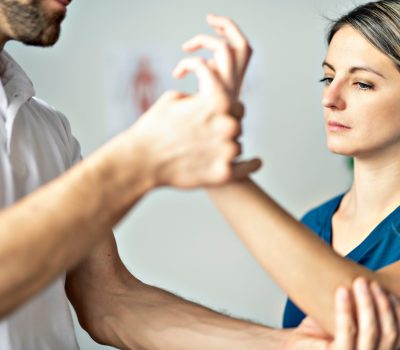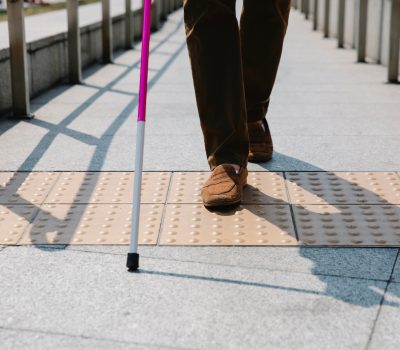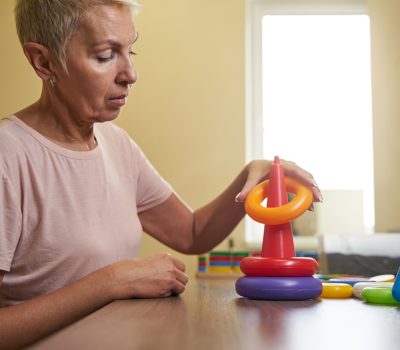Common symptoms of Parkinson’s
Firstly it is important to note that everyone with PD is different, no one has the same set of symptoms and people often change at different rates. Below are a common list of symptoms that we aim to address through exercise:
- Bradykinesia (slower and smaller movements)
- Tremor
- Postural instability (balance)
- Rigidity (stiffness)
- Changes in physical posture – often bending through your back and knees/hips.
- Dyskinesia (erratic writhing type movements)
- Freezing of gait (getting stuck in doorways or having trouble starting to walk)
- Micrographia (smaller handwriting)
- Difficulty dual tasking (for example walking and talking or walking and throwing a ball).
It is important to note you may not have all of these and in some cases people don’t present with any, but that once you have identified an area you want to work on, you can focus your energies on challenging it.
We know that through a concept called “Neuroplasticity” we can challenge your nervous system to change and protect itself. However it is important the exercises are challenging enough to meet this threshold and drive change.
We also know your nervous system will adapt to the demands placed on it so a varied set of exercises is important to keep your body guessing.
So what sort of things should I be doing?
Dose
Firstly let’s talk about dose, ideally you should begin your exercise (if you aren’t already) at the point at which you are diagnosed. All the evidence points to the fact that regular exercise throughout your life has so many health benefits, and even more so when we are talking about Parkinson’s. It can help slow the progression of your condition and delay the need for medication (which has its own side effects).
The recommendation for those with PD is to exercise 2.5 hours per week. As a physiotherapist working for many years with people with PD I would suggest this is a minimum, not a maximum.
Type
Secondly we need to consider the type of exercise and this can be split into 4 main areas:
- Aerobic (anything that gets you out of breath, this could be gardening, brisk walking, running or a sport).
- Strength training (weighted exercises, this can include body weight)
- Balance training (exercises like tai chi, yoga and balance specific classes).
- Stretching
A good exercise plan will have a mix of all 4 of these elements.
Focus
It’s really important to focus on what you are trying to achieve during your exercise program, for example asking yourself things like
“Am I wanting to work on moving quicker?”
“Do I need to improve my strength?”
“Do I need to focus on creating larger movements?”
“Do I need to practice dual tasking”
Understanding why you are doing the exercise and focussing on achieving it will yield better results. A physiotherapist or personal trainer can guide you on the best sorts of exercise tailored to your specific symptoms.
We can split our focus into a few main areas:
- Amplitude – creating larger movements and pushing your limits in terms of range of movement.
- Speed – Working on moving faster, without losing the size of the movement or losing control.
- Power – generating more powerful movements, putting in 80% effort to each move or adding weight.
- Complexity – layer your movements with dual tasks, either through memory games with movement or additional movements such as walking and bouncing a ball.
- Control – working on the smoothness of your movement through a large range, classes such as Tai Chi are a good example.
- Stretching – maintain your range of movement through classes like Yoga or pilates.
The Parkinson’s Excellence network have created a handy resource to help you tailor your exercise
Finally let’s pick apart some of those symptoms and look at the best type of exercise for addressing them:
- Bradykinesia
Exercises like boxing, brisk walking, circuit classes and running can all help.
- Tremor
Improving your postural stability and general strength through circuit classes, yoga, tai chi and swimming may help.
- Postural instability
Attending specific balance classes, yoga, pilates, dancing and tai chi.
- Rigidity
Working on your range of movement through yoga, pilates, tai chi and other stretches will help.
- Changes in physical posture
Working on your postural stability, range of movement and stretch. A mix of circuit classes and balance exercises/body weight training will help.
- Dyskinesia
Attending boxing, swimming, dancing and yoga classes.
- Freezing of gait
Dancing, nordic walking and boxing classes to help with timing and rhythm.
- Micrographia (smaller handwriting)
Working in circuit classes to focus on increasing the size or your movements as well as your stamina.
- Difficulty dual tasking
Circuit classes, boxing, functional exercises and practice with the task you are finding difficult, dance classes.
If you wish to participate in some online classes please view the Youtube link below:
https://www.youtube.com/@foundationsphysio2358/videos
More information can be found on the websites below:
https://www.livewellwithparkinsons.uk/exercise-wheel
https://www.parkinsons.org.uk/information-and-support/physical-activity-and-exercise






